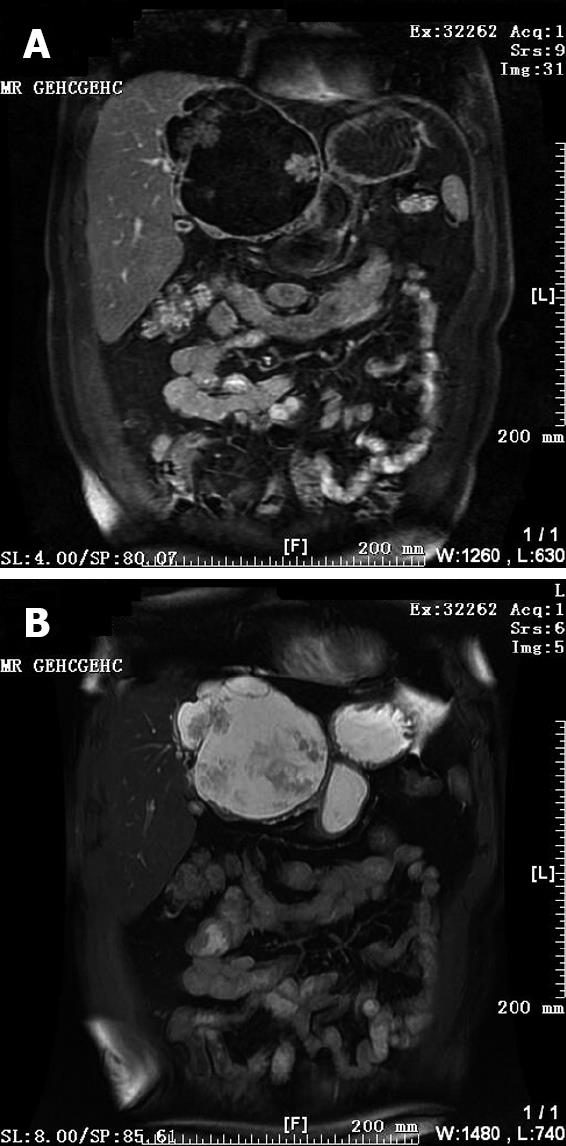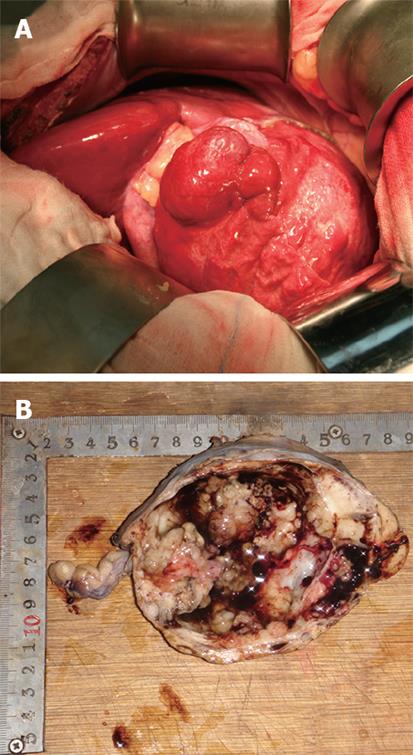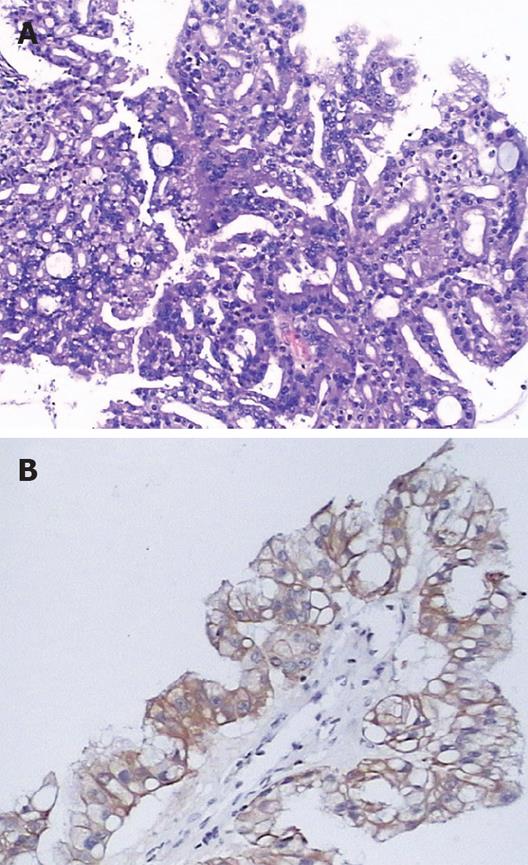Copyright
©2009 The WJG Press and Baishideng.
World J Gastroenterol. Apr 21, 2009; 15(15): 1906-1909
Published online Apr 21, 2009. doi: 10.3748/wjg.15.1906
Published online Apr 21, 2009. doi: 10.3748/wjg.15.1906
Figure 1 Transverse CT scan (A) showing a combined multiple low-density area and contrast CT showing enhanced septum (B) and convex papillate (C) of the tumor.
Figure 2 Magnetic resonance imaging showing a low intensity area on T1WI (A), and a medium-high intensity signal area on T2WI (B) as a multilocular cystic lesion with convex papillate.
Figure 3 A large cystic hepatobiliary cystadenoma in the left hepatic lobe (A) and a multilocular hepatobiliary cystadenoma with papillary projections (B) observed during and after operation.
Figure 4 Locules were lined by simple columnar-to-cuboidal epithelium with no nuclear atypia (HE, × 100) (A), and CK7 strongly and diffusely stained cystadenomas (immunostaining, × 400) (B).
Similar results were also observed with CK8, CK18 and CK19 staining.
- Citation: Qu ZW, He Q, Lang R, Pan F, Jin ZK, Sheng QS, Zhang D, Zhang XS, Chen DZ. Giant hepatobiliary cystadenoma in a male with obvious convex papillate. World J Gastroenterol 2009; 15(15): 1906-1909
- URL: https://www.wjgnet.com/1007-9327/full/v15/i15/1906.htm
- DOI: https://dx.doi.org/10.3748/wjg.15.1906












